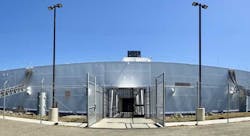Location, Location, Location, and How Fast Can We Deploy?
This is the first article in a three-part series.
The issues that get in the way of building a data center where it is needed, generally thought of as an 18 to 24-month process, can often get stretched out to a four to five-year timeline after everything from site selection to permitting, zoning approval, and construction are factored in. And as issues such as build efficiency and data center sustainability get factored in, the process can become even more complex and arduous, as governmental focus on environmental concerns impacts the creation of new data centers.
Finding a more efficient approach
The approach to building data centers, especially in space and resource-constricted areas, needs to change. When faced with the challenge of delivering 40MW or more of capacity in one of these increasingly common environments, it is becoming a more reasonable approach to take it in stages. To look for a solution that can provide 25 percent of that capacity in 12 months as a first stage, rather than spending three years to put that higher capacity, with its planned growth support, in place. A staged approach not only delivers faster, but gets your foot in the door, allowing your business to begin delivering the services that it believes are needed in those locations.
As limits continue to be put in place on where data centers can be located, how much power they can use, and restrictions on environmental impact such as thermal effects and water use, the need for more efficient designs for your data centers moves to the fore.
Increasing your flexibility and improve your sustainability
To be more environmentally friendly, you need to be able to broaden your site selection criteria. Locations that might not have been on your radar, such as brownfields, heavy industry, or even floating platforms, all of which may be able to place your data center in a more advantageous location, need to be considered.
Construction techniques allowing for significant off-site work to be accomplished will make for a more efficient build process, reducing waste and speeding up the on-site construction. This model can accommodate both standardized and custom data center designs, all of which can reap the efficiency benefits of the technique.
Taking this approach can improve both the CAPEX and OPEX of your data centers, with efficiencies from construction to operation resulting in quicker, more efficient, and improved business outcomes with your data center when compared to traditional site selection, construction, and operation of business data centers. Rethinking the “where” and how you place and deploy your new data centers is the first step in building the next generation of getting technology where you need it most.
Rob Pfleging is CEO & President of Nautilus Data Technologies. Contact them to learn more about meeting your data center sustainability goals.


